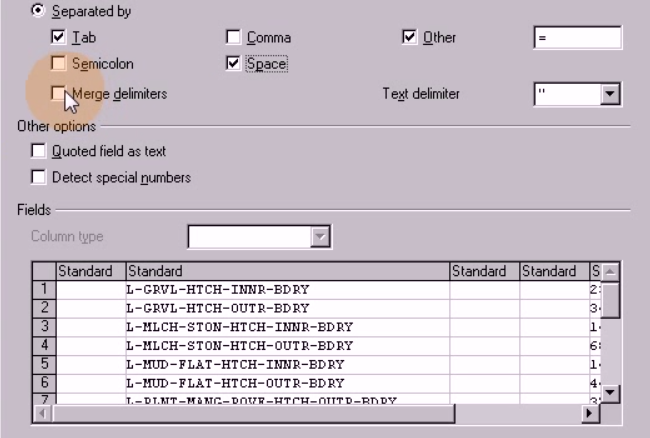A common requirement in a design business is the need to do a quantity takeoff and costing spreadsheet for your design at each phase of the project. The following describes a fairly basic process to achieve this using AutoCAD and either Excel, OpenOffice or Google Apps.
The quantity takeoff and costing spreadsheet creation method I will demonstrate requires the following:
1. AUTOCAD DRAWING
An AutoCAD drawing with a hatch boundary polyline on a unique layer for each and every different treatment type. Thus each and every treatment has a unique hatch layer and hatch boundary layer. For example the concrete pavement layer names would be
L-PAVE-CONC-HTCH – this is the hatch layer
L-PAVE-CONC-HTCH-BDRY – this is the hatch boundary layer
Good layer naming and management is vital to any AutoCAD drawing so this should not be a big task to set-up. This allows for an easy area calculation for all treatments which is part of the quantity takeoff.
2. AUTOCAD DRAWING
An AutoCAD drawing with a uniquely named block for each and every tree species and feature shrub. For example my name for the tree block for each Agonis flexuosa tree would be AGF. This allows for an easy count of the trees which is part of the quantity takeoff.
3. LISP CODE
What is LISP? It is short for AutoLISP and is a programming language specifically for AutoCAD (but not AutoCAd LT). If you want to read more see here. Get the required LISP code from the last post – #7 here. This is the routine that does the treatment area calculation for the quantity takeoff. Copy and paste it into Notepad. Save the file as SAL_SumAreaLayer.lsp
NOTE: this lisp routine was kindly posted on the CADTutor forum by Vladimir Azarko – it is not my creation nor am I claiming it to be.
YOU NEED TO DO STEP 4a OR 4b…
4a. BCOUNT TOOL FROM EXPRESS TOOLS
Express tools is a suite of tools to help expand the AutoCAD tool set. If you haven’t loaded express tools here is how you do it for AutoCAD 2013
4b. LISP FILE
Download the LISP file from here. This is the routine that counts the tree blocks as part of the quantity takeoff.
NOTE: this lisp routine was created by Lee Mac – it is not my creation nor am I claiming it to be. Have a good look around Lee Mac’s website – he’s the master of lisp.
5. EXCEL, OPENOFFICE OR GOOGLE APPS TEMPLATE FILE
I’ll be using an OpenOffice template file with the formulas set-up to use the quantity takeoff data and make the calculations to create the costing spreadsheet. It will also work perfectly with an Excel or Google Apps Spreadsheet.
VIDEO SHOWING HOW TO DO IT
See the video below for the step-by-step instructions for how to do the quantity takeoff and costing spreadsheet. The costs that I have used in the spreadsheet are not true – I have used them only to show how the formulas work:
WHY IS THIS A GOOD METHOD?
The great thing about this method for quantity takeoff and costing spreadsheet creation is that you can use it through the whole project and update it as the design is amended. That way you will always have an accurate costing for your design. There are other more automated ways to achieve this end result and I may look at them in a future post.
ANY QUESTIONS?
Thanks for reading and apologies for the long post. Let me know if you found this information useful. Let me know how you do your quantity takeoff and costing spreadsheet. Also if you have any questions or suggestions then please go to the comments section just below here and start typing…I’m waiting for your questions….
Paul Stafford
Published in Blog


















